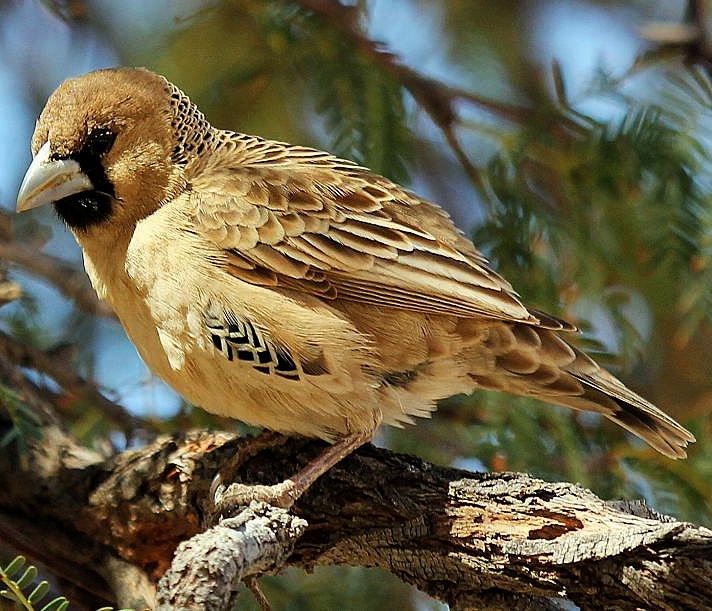 |
| Photo by Marco Valentini (Internet Bird Collection) |
Common name:
sociable weaver (en); tecelão-sociável (pt); républicain social (fr); tejedor republicano (es); siedelweber (de)
Taxonomy:
Order Passeriformes
Family Ploceidae
Range:
This species is found in Namibia, south-western Botswana and northern South Africa.
Size:
These birds are 14 cm long and weigh 26-30 g.
Habitat:
The sociable weaver is found in dry grasslands, scrublands with scattered trees and open Acacia and Mopane savannas. Also in desert areas providing there are human structures for nesting.
Diet:
They feed on the ground, usually in large flocks. Mainly they take seeds, but also grass leaves, fruits, flowers and insects such as termites, ants, caterpillars, small grasshoppers and beetles.
Breeding:
The sociable weaver is a colonial, cooperative breeder, living in colonies of up to 500 birds. The breeding season depends on rainfall patterns, but in some areas is usually in August-November. The whole colony nests in a massive communal nest made of dry grasses and thorny twins, placed in a vertical branch or in a human structure. The nest can be 7 m long, weigh over 1 ton and be over 100 years old and can be also used by other species such as pygmy falcons and other weavers. Each female lays 2-6 eggs, which are incubated by both sexes and sometimes helpers for 12-15 days. The chicks are fed by both parents and several helpers and fledge 21-24 days after hatching, but only become fully independent 4-7 weeks later.
Conservation:
IUCN status – LC (Least Concern)
This species has a large breeding range and is described as common to abundant. The population has increased substantially over the last century has it expanded into treeless areas where it uses artificial structures as nest sites.







